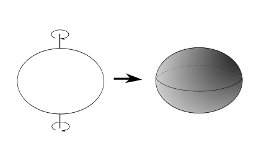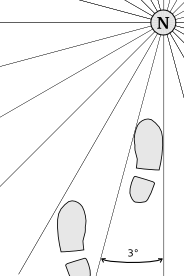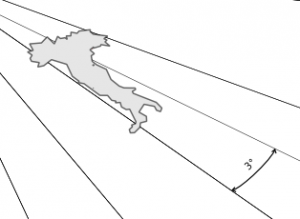Here are some terms I use in other posts about geospatial topics.
Ellipsoid
An ellipsoid is an idealized shape for the earth. Because the earth spins around at the amazing speed of about 1000 miles an hour, it bulges out at the equator, balanced between the outward pull of momentum and the inward pull of gravity. Ignoring small things (small to the Earth, at least) like mountains and oceans, this makes the Earth’s shape an ellipse rotated around its vertical axis, also known as an ellipsoid or oblate spheroid.
Datum
A datum is a specific ellipsoid. As Earth-measuring techniques have improved, the accuracy of the ellipsoid has been getting better and better, and every so often a new datum is released. Also, a datum might be created for a specific use. For example, WGS84 was defined for worldwide use, even though it might have some deformations in some areas compared to more local datums. Other examples of datums are NAD27, NAD83, and GRS80.
Geographic Coordinate System
A geographic coordinate system (GCS) is a way to specify a point on the surface ofthe earth. The most commonly used GCS is latitude and longitude, with a specific datum typically given to describe the exact shape of the earth.
One question that people new to projections and GIS ask themselves is “Can I draw maps directly using a geographic coordinate system like lat-lng”? The answer is “Yes, you can.”. You can do this for small areas, but your map will suffer distortion at larger areas, especially as you move north or south, where small features will look much wider on your map than they really are.
For an extreme example, imagine yourself just a few steps from the north pole, where the lines of longitude converge into one point. You could walk “around the earth” in a few seconds, and your footprint might be a few degrees big itself.
If you drew your footprint as a few degrees wide, along with Italy which is also a few degrees wide, your footprint would be as wide as Italy. To avoid this distortion, use a projected coordinate system.
Projected Coordinate System
Moving one step up in complexity, a projected coordinate system is one where the points have been “projected” from a curved surface like an ellipsoid to a flat surface. This is the often-mentioned “projection”. Why do we project it? So it will look better (with different meanings for “better” depending on the type of projection) when it’s displayed on a flat surface like a computer screen or a piece of paper. While it’s nice (even necessary) to be able to look at the map on a flat surface, projecting a curved surface onto a flat surface introduces all kinds distortions. Various type of projections are used to minimize those distortions based on where the map is and what the cartographer thinks it might be used for.



